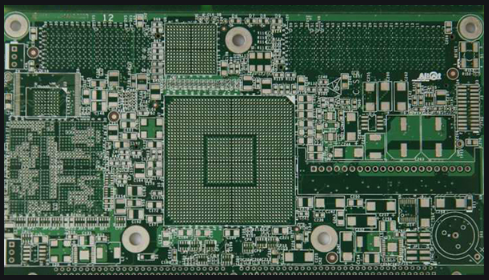As the carrier of various components and the hub of circuit signal transmission, PCBA board has become the most important and key part of electronic information products. Its quality and reliability level determine the quality and reliability of the whole equipment. However, due to cost and technical reasons, a large number of failure problems have occurred in the process of PCB production and application.
Then some commonly used failure analysis techniques must be used. Between the structural characteristics of the PCB and the main failure modes, this article will focus on nine techniques for PCB failure analysis, including: visual inspection, X-ray fluoroscopy, metallographic section analysis, thermal analysis, photoelectron spectroscopy, display Micro-infrared analysis, scanning electron microscope analysis and X-ray energy spectrum analysis, etc. Metallographic section analysis is a destructive analysis technique. Once these two techniques are used, the sample is destroyed and cannot be recovered; in addition, due to the requirements of sample preparation, scanning electron microscopy and X-ray energy spectrum analysis may sometimes be required Partially destroy the sample. In addition, in the process of analysis, due to the need for verification of failure location and failure reasons, it may be necessary to use test techniques such as thermal stress, electrical performance, solderability testing and size measurement, etc., which will not be specifically introduced here. .
1. Appearance inspection Appearance inspection is to inspect the appearance of the PCB visually or using some simple instruments, such as a stereo microscope, a metallographic microscope or even a magnifying glass, to find the failed location and related physical evidence. The main function is to locate the failure and make a preliminary judgment of the PCB. Failure mode. The visual inspection mainly checks the PCB pollution, corrosion, the location of the board burst, the circuit wiring and the regularity of the failure, if it is batch or individual, is it always concentrated in a certain area, etc. In addition, many PCB failures are only discovered after assembly into PCBA. Whether the failure is caused by the assembly process and the materials used in the process also requires careful inspection of the characteristics of the failure area.

2. X-ray fluoroscopy inspection For certain parts that cannot be visually inspected, as well as the internal and other internal defects of PCB through holes, X-ray fluoroscopy system has to be used for inspection. X-ray fluoroscopy systems use different material thicknesses or different material densities based on different principles of moisture absorption or transmittance of X-rays for imaging. This technology is more used to check the internal defects of PCBA solder joints, the internal defects of through-holes, and the positioning of defective solder joints of BGA or CSP devices in high-density packaging. The resolution of current industrial X-ray fluoroscopy equipment can reach less than one micron, and it is changing from two-dimensional to three-dimensional imaging equipment. There are even five-dimensional (5D) equipment used for package inspection, but this 5D X The optical perspective system is very expensive and rarely has practical applications in the industry.
3. Slicing analysis Slicing analysis is the process of obtaining the cross-sectional structure of the PCB through a series of methods and steps such as sampling, inlaying, slicing, polishing, corrosion, and observation. Through slice analysis, we can get rich information of the microstructure that reflects the quality of the PCB (through holes, plating, etc.), which provides a good basis for the next quality improvement. However, this method is destructive. Once sliced, the sample will inevitably be destroyed. At the same time, this method requires high sample preparation and takes a long time to prepare samples, requiring well-trained technicians to complete.